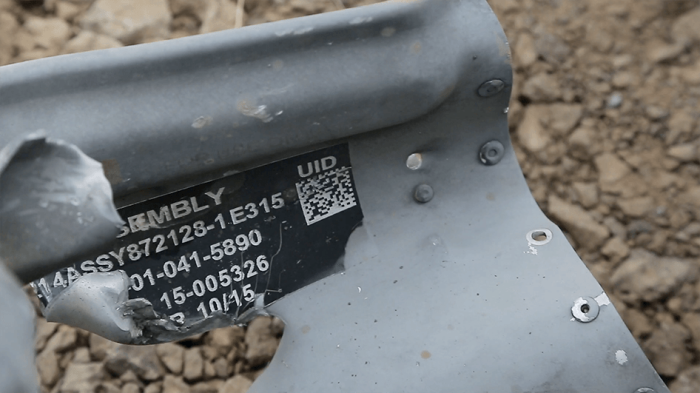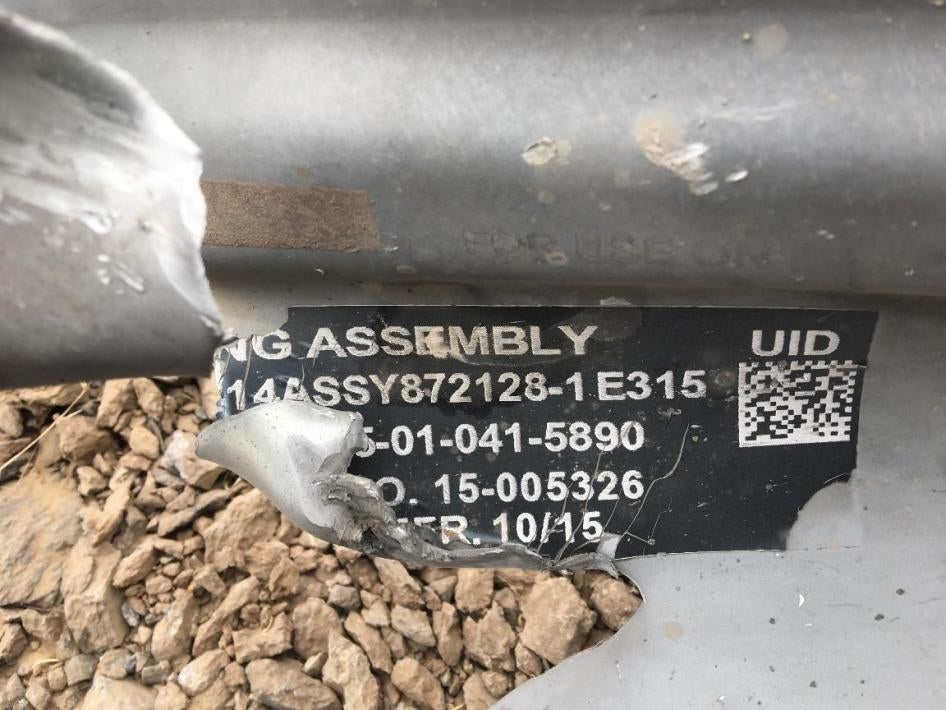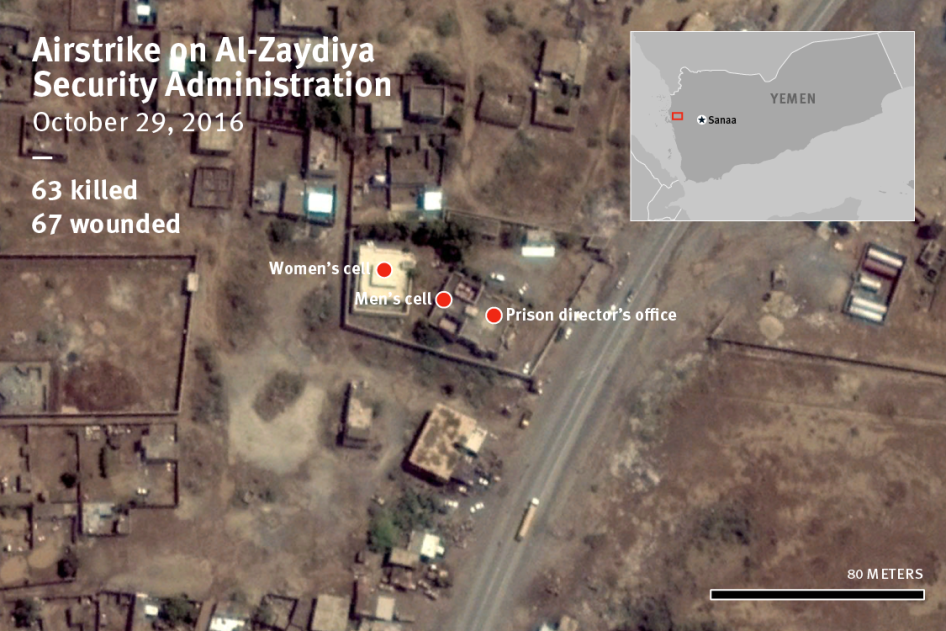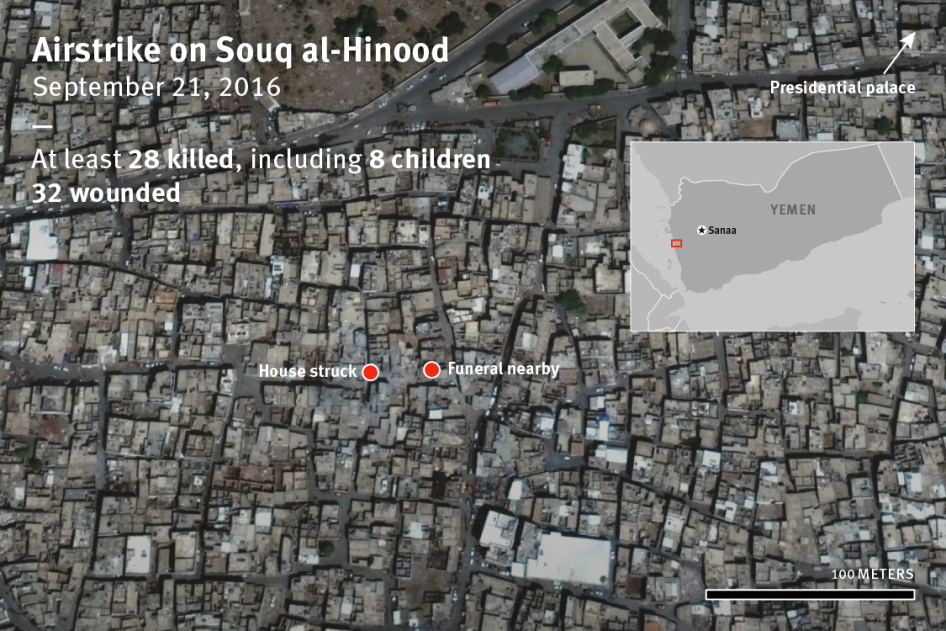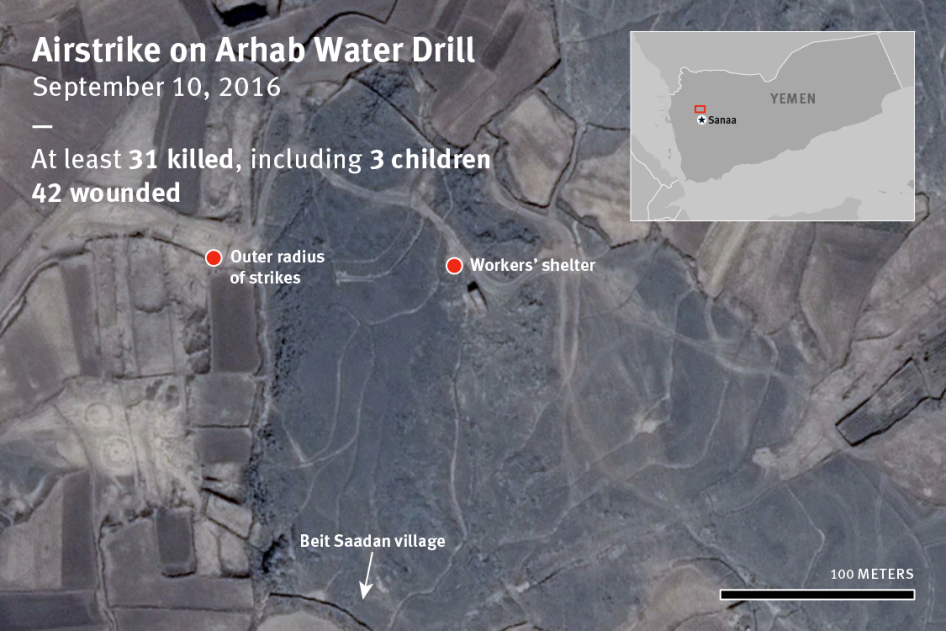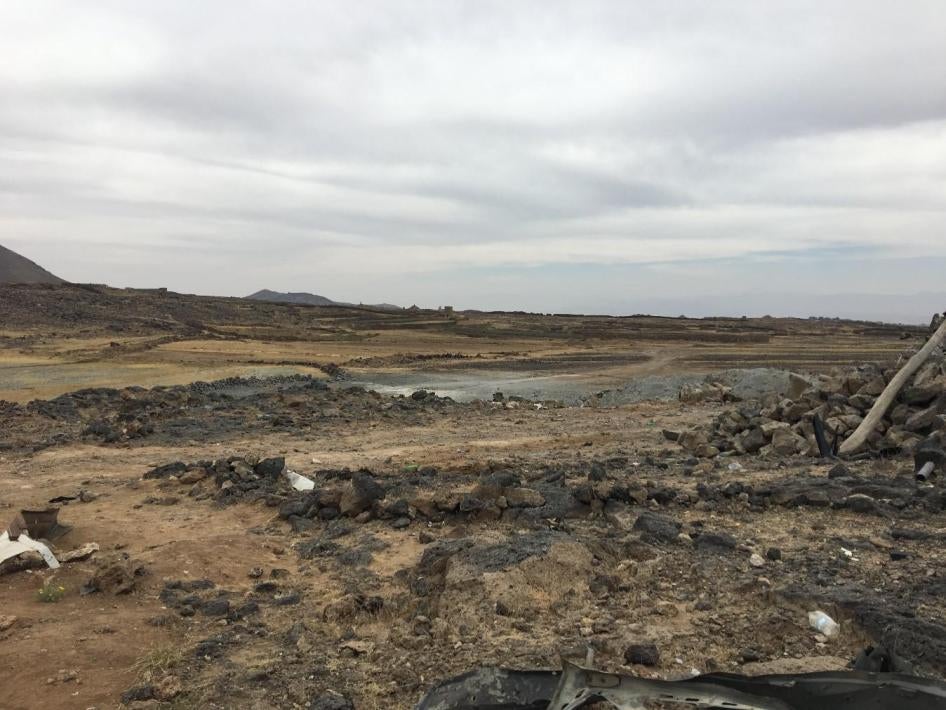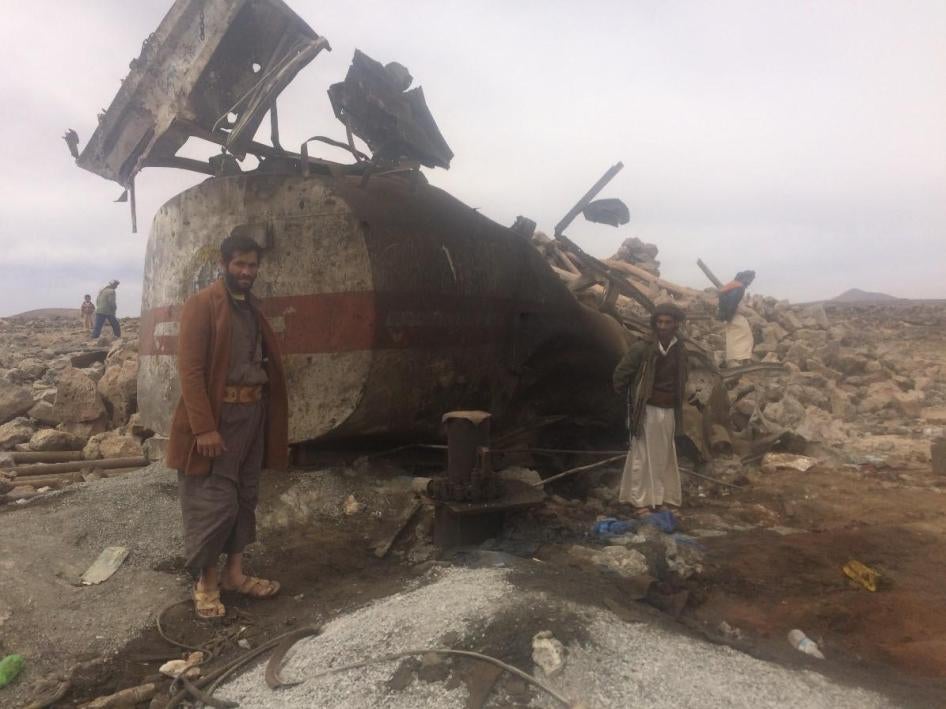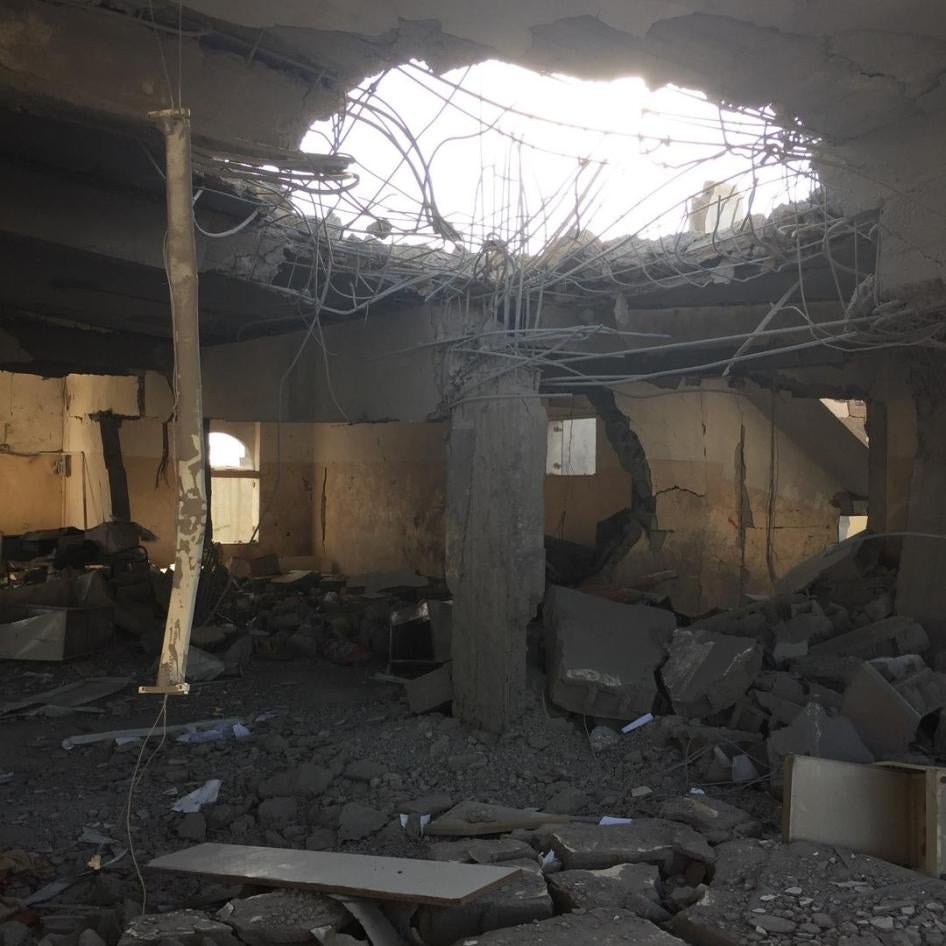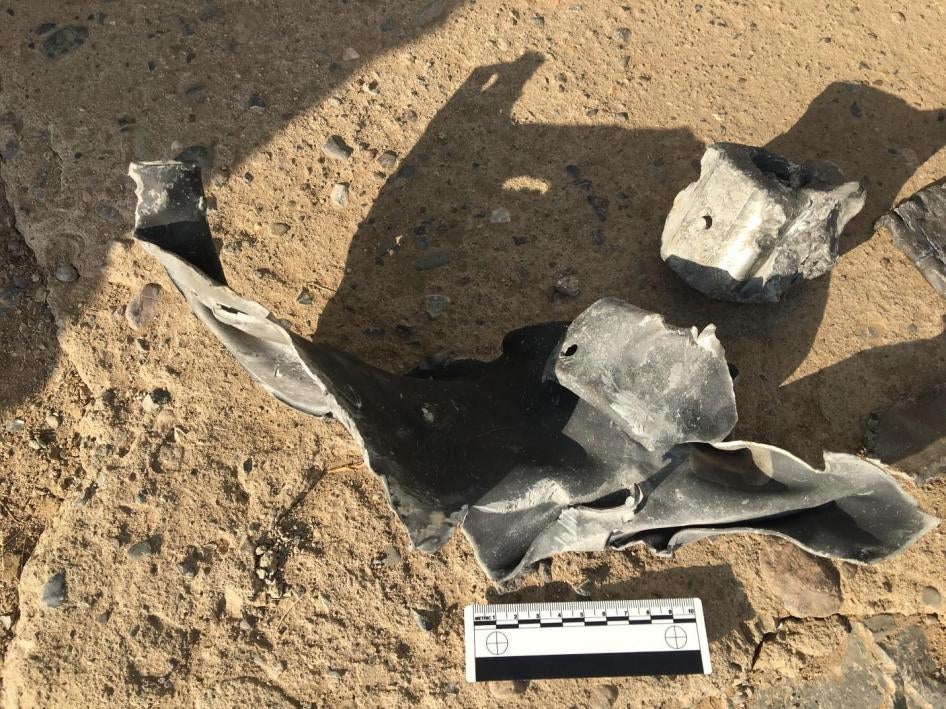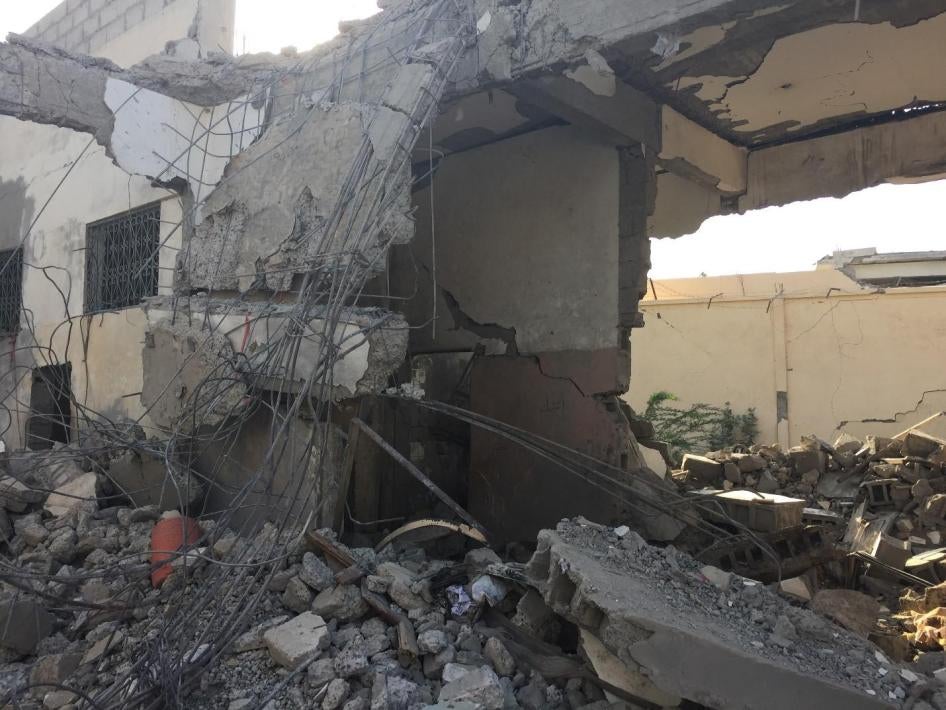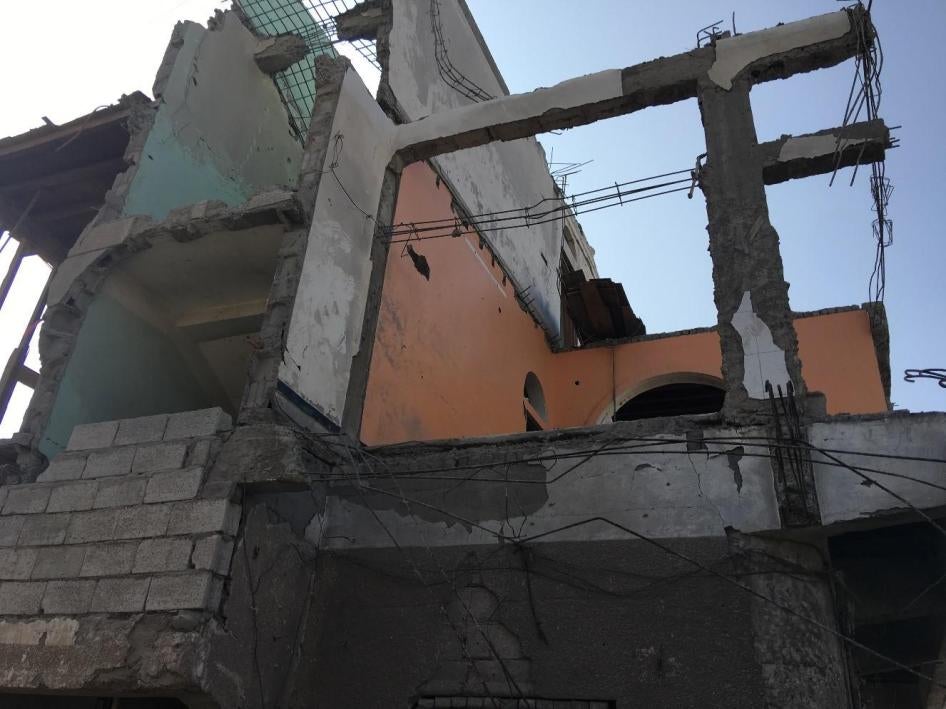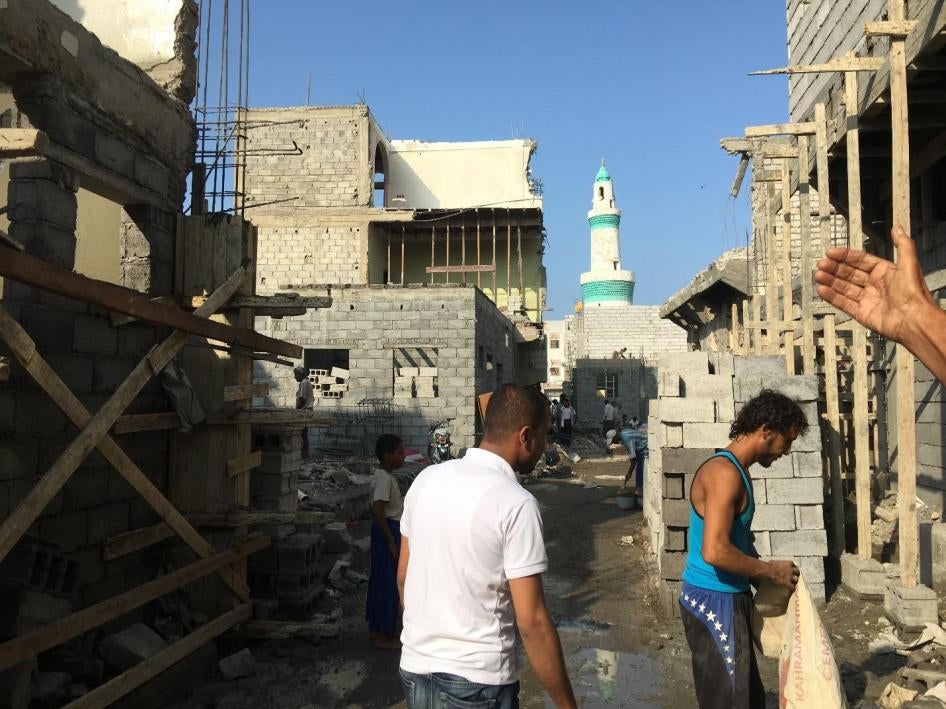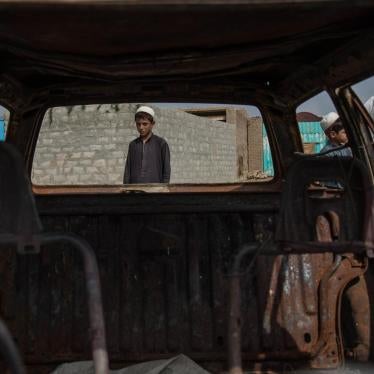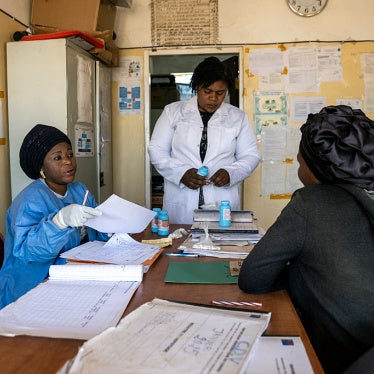(Beirut) – The Saudi Arabia-led coalition killed several dozen civilians in three apparently unlawful airstrikes in September and October 2016, Human Rights Watch said today. The coalition’s use of United States-supplied weapons in two of the strikes, including a bomb delivered to Saudi Arabia well into the conflict, puts the US at risk of complicity in unlawful attacks.
The attacks underscore the urgent need for foreign governments to suspend all arms sales to Saudi Arabia and for the United Nations human rights office to send additional investigators to Yemen to carry out credible investigations of alleged abuses by the coalition, the Houthis and their allies, and all other parties to the conflict, Human Rights Watch said.
“Saudi-led forces are bombing civilians in Yemen with newly supplied US weapons,” said Priyanka Motaparthy, senior emergencies researcher at Human Rights Watch. “The Obama administration is running out of time to completely suspend US arms sales to Saudi Arabia or be forever linked to Yemen wartime atrocities.”
Since the beginning of the Saudi-led campaign in March 2015, Human Rights Watch has found remnants of US-supplied weapons at the site of 23 apparently unlawful coalition airstrikes, including more than a dozen attacks involving US-made cluster munitions. Researchers did not find identifiable remnants in every attack documented. The US approved more than US$20 billion in military sales to Saudi Arabia in 2015 alone. Three US arms sales in 2015 and 2016, worth nearly US$3 billion, involved replenishing Saudi weaponry used in Yemen.
Human Rights Watch located remnants of US-made weapons at the site of coalition airstrikes in Arhab in Sanaa governorate and in the Hodeida governorate. A September 10 attack on a drilling site for water in Arhab killed at least 31 civilians, including three children.
Human Rights Watch researchers found remnants of two US-made GBU-12 Paveway II laser guided 500-pound bombs. One Paveway II laser guidance system had markings indicating it was manufactured by Raytheon, Inc., a US arms manufacturer, dated October 2015 – seven months after the start of the war. The other weapon was manufactured at an undetermined date in 2015. By October 2015, the UN as well as Human Rights Watch and others had already reported numerous unlawful attacks by coalition forces.
A coalition airstrike on October 29 struck the al-Zaydiya security administration building north of the city of Hodeida. Many of the about 100 people who were being detained in the facility died in the bombing. The Houthis and allied forces stationed military personnel and trucks mounted with machine guns at the site.
But even if a strike was on a military target, it may have unlawfully caused disproportionate civilian casualties. Human Rights Watch researchers found remnants consistent with a US-made JDAM satellite-guided bomb at the site.
A coalition airstrike on Souq al-Hinood, a densely populated neighborhood in Hodeida, on September 21 killed at least 28 civilians, including eight children, and wounded 32 others. The only known military target in the vicinity was the city’s Presidential Palace, about 450 to 500 meters away, which was bombed earlier that day.
Between March 2015 and October 2016, at least 4,125 civilians were killed and 7,207 wounded in Yemen, according to the UN Office of the High Commissioner for Human Rights (OHCHR), the majority by coalition airstrikes. OHCHR reported in August that airstrikes had been the “single largest cause of casualties” over the past year. The Houthis and their allies, including forces loyal to former president Ali Abdullah Saleh, have also committed numerous serious abuses.
The Saudi-led coalition has repeatedly used US-produced weapons in unlawful attacks. US-produced weapons were used in two of the war’s deadliest incidents so far: the March 15 attack on Mastaba market, which killed at least 97 civilians, and the October 8 attack on a funeral hall in Sanaa, the capital, which killed at least 100 people and wounded more than 500. Both attacks appear to have been war crimes.
The continued transfer of arms by the United States to Saudi Arabia, despite evidence of their repeated use in unlawful attacks, may make the US complicit in some of the coalition’s violations in Yemen. The US is also party to the conflict in Yemen, providing targeting intelligence and refueling planes during bombing raids, but the US has not announced any independent investigation into its actions in the Yemen war. According to a Reuters investigation, US officials debated internally whether US support to the coalition could make US personnel criminally liable for war crimes in Yemen.
In May, the US suspended transfers of cluster munitions to Saudi Arabia. However, President Barack Obama, before he leaves office, should halt all arms transfers to Saudi Arabia and make the cluster munition ban permanent and extend it to all other countries, Human Rights Watch said.
Immediately following the October 8 funeral hall attack, the US National Security Council announced the US had “initiated an immediate review of our already significantly reduced support” to the coalition and was “prepared to adjust our support.” The US has made no further announcements regarding how it planned to alter support for the war in Yemen nor released any findings from the review. President Obama should ensure that the review examines whether US forces participated in any unlawful coalition attacks in Yemen, and release the review findings before leaving office, Human Rights Watch said.
The government of the United Kingdom also sells arms to Saudi Arabia, despite growing parliamentary pressure over its support for Saudi Arabia’s military campaign in Yemen and evidence of the use of British-made weapons in Yemen. Human Rights Watch has documented the use of UK-made weapons in three apparently unlawful coalition attacks in Yemen. Since March 2015, the UK has approved £3.3 billion in military sales to Saudi Arabia, according to the London-based Campaign Against Arms Trade.
On November 15, the UK Foreign and Commonwealth Office concluded, despite considerable evidence to the contrary, that there was no clear risk of serious Saudi breaches of international humanitarian law in Yemen. The ministry had previously issued six corrections to statements, walking back its initial denial of coalition laws-of-war violations in Yemen. But it noted that, “UK Defence personnel are unable to form a complete understanding of the coalition’s regard for international humanitarian law in Yemen as they do not have access to all the information required to do so.”
Neither the Saudi-led coalition’s Joint Investigation Assessment Team (JIAT) nor the Yemeni-led National Commission has announced investigations into the three airstrikes. JIAT, after releasing initial investigation results into eight airstrikes on August 4 that largely absolved the coalition of responsibility, has only published initial results of one additional investigation, the October 8 funeral hall airstrike, after the strike received widespread international condemnation. JIAT’s published investigations have failed to meet international standards for credible and transparent investigations into laws of war violations, Human Rights Watch said.
In September, the UN Human Rights Council passed a resolution mandating the UN human rights office to deploy additional human rights experts to investigate abuses by all sides, and report publicly on its findings. These three attacks highlight the need for the warring parties and concerned governments to fully support the office’s expanded investigative mandate, Human Rights Watch said.
“Governments selling weapons to Saudi Arabia cannot with any credibility rely on either coalition or Yemeni-led investigations to determine whether these weapons are being used against civilians,” Motaparthy said. “The US, UK, and others selling weapons to Saudi Arabia should suspend these sales until unlawful attacks are curtailed and properly investigated.”
Arhab Water Drilling Site, September 10, 2016
Casualties: At least 31 civilians killed, including three children, and 42 injured.
Munitions Identified: Two GBU-12 Paveway II laser guided 500-pound bombs. One bomb wing assembly produced by Raytheon in the US in October 2015. Second bomb wing assembly produced in the US in 2015, exact manufacture date unknown.
Before dawn on September 10, coalition aircraft struck the site of a water drilling rig near Beit Saadan village in the Arhab district, 30 kilometers north of Sanaa. The drill rig was in an unpopulated area reachable only by dirt road, about two kilometers from the nearest village. Multiple strikes over the course of the morning killed at least 31 civilians and wounded 42 more, according to OHCHR.
The first strike hit near a workers’ shelter occupied by nearly a dozen workers and managers, killing six and wounding five others. At about 9 a.m., after several dozen villagers came to remove the bodies of those killed and examine the site, three planes returned and proceeded to bomb the vicinity at least 12 more times, about 15 minutes apart, witnesses said. The strikes lasted until about noon, killing at least 15 civilians, and wounding dozens more. Human Rights Watch independently confirmed the names and ages of 21 people who died in the attack, including three boys ages 12, 14, and 15.
Yehia Abdullah, a 34-year-old teacher, said he spent the evening with his brother Muhammed and other workers at the site. His brother died in the first strike. Abdullah, who had left the site 20 minutes earlier, was on his way back when he heard the bombing:
I saw the light of a bomb on the site of the drill rig. I tried to reach them by phone, but no one answered. … I arrived while the drill machine was operating and saw scattered and charred bodies. Everyone was in his place where he had been working or sitting. I saw five bodies including my brother Muhamad. First I found my brother’s severed leg outside the [workers’ shelter], about six meters, his arm on the door … and half his body buried in the ruins.
Salim al-Sadani, a local farmer, said that when he learned that his uncle Mahdi al-Sadani had died in the airstrike, he went to the site, arriving at about 8 a.m.
About 300 people, including the dead’s relatives, [were there] to remove the bodies. … I saw two warplanes arriving from the south. Between 8 and 9 a.m., I saw the missile coming down to ground as I was [here] next to my uncle's body.
Sadani said he lost consciousness briefly when the strike threw him to the ground:
I saw myself full of blood and ran away. I just saw smoke and flame. I saw a body of an old man in front of me, he is from [Thinah], the neighboring village. He was dead. I was taken to [the] hospital. I was injured by [fragments] in the left hand … as well as [fragments] in my back.
Several witnesses said that three coalition planes circled overhead, striking the area in widening circles as those gathered attempted to escape. People ran in all directions to escape the bombing, they said.
Human Rights Watch visited the site on November 10, and examined the rubble of the workers’ shelter, as well as the burned wreckage of a fuel tanker truck. There were at least 11 bomb craters or impact sites in the immediate area. Footage of the site taken the day of the strikes shows many burned and mutilated bodies.
Human Rights Watch examined and photographed remnants of a US-made GBU-12 Paveway II laser guided 500-pound bomb. A part of the guidance system (wing assembly) was produced by Raytheon in the US in October 2015, according to markings on the remnants.
Residents of Beit Saadan said that they had pooled together 22 million Yemeni Rials (US$88,000) of their personal funds to pay to drill the well to supply drinking water to their village. The bombing occurred on the last day of planned drilling, after the villagers had struck water, a local farmer said. Several witnesses said that no Houthi fighters or military equipment were stationed in the area before the strikes.
When Agence France Presse questioned a coalition spokesman, Gen. Ahmed al-Assiri, about the attack, he replied, “All our strikes in that area target Houthi positions.” The coalition has not announced an investigation into the attack.
Deliberate or indiscriminate attacks on civilians and civilian infrastructure are a serious violation of the laws of war, and if carried out intentionally or recklessly are war crimes.
Al-Zaydiya Security Administration, October 29, 2016
Casualties: 63 Houthi personnel and civilians killed and 67 wounded.
Weapons Identified: US-made JDAM satellite guidance system.
Between 8 and 9 p.m. on October 29, three airstrikes hit the al-Zaydiya security administration, 60 kilometers north of the city of Hodaida, in the Hodaida governorate. Beyond using the building as a jail, the Houthis and allied forces based military personnel and trucks mounted with machine guns at the facility, making it a legitimate military target. Human Rights Watch could not determine whether these personnel and vehicles were there at the time of the attack.
The strikes killed at least 63 people and injured 67, according to OHCHR. Many of the casualties were alleged criminal and security detainees held at the facility without charge, including at least two children. The Sanaa-based Foreign Affairs Ministry wrote on December 1, in response to a Human Rights Watch letter, that there were about 126 people, including both prisoners and staff, at the detention facility at the time of the attack. The ministry wrote that 62 people were killed, including 30 prisoners. Human Rights Watch could not confirm how many of those killed or injured were prisoners and how many were security administration officials.
The Foreign Affairs Ministry’s letter explained that the security administration had two sets of wards, the first housing 84 criminal suspects and the second, the former women’s section, housing 22 men accused of “terrorism,” working with the coalition or working to undermine state security. A guard and former detainee confirmed to Human Rights Watch that the detention facility held about 60 criminal suspects and about 30 alleged security detainees. Human Rights Watch interviewed former detainees held in both buildings.
Six former detainees said that they had been held between several months and several years on suspicion of common crimes. Most had no access to legal counsel or judicial review throughout their detention. The ministry said all the detainees were under investigation or had charges brought against them. “Saeed,” a prisoner in Al-Zaydiya, told Human Rights Watch that he had been held in the former women’s section for at least four months, based on Houthi accusations that he was in the armed opposition. He said:
I’m not a soldier and I’ve never been a soldier. They took me and covered my eyes and put me here. They interrogated me a few times while my eyes were covered. No one was allowed to visit me, and they never took me to the prosecutor or the court.
A source from Al-Zaydiya familiar with the security administration said that the Houthis used the facility as a base for military operations in the area, an allegation that the Foreign Affairs Ministry denied in its letter to Human Rights Watch. However, members of Houthi popular committees, which the ministry described as “undertake[ing] and administer[ing] security activities… [to] assist the concerned security entities in fulfilling their duty to maintain security and stability during the Saudi aggression,” oversaw the security detainees, the letter said. Members of popular committees who are full-time fighters are subject to attack.
The airstrikes hit the roof of the administration building; one of two cells holding male suspects; and the facility’s women’s cell, the separate building used to house security detainees.
“Ahmed,” who had been detained in the facility’s main section, said that when the first strike hit:
[We] ran to the door and tried to get out, [we were] asking to be let out. … Then the second missile hit, and then the third on my ward. All the prisoners were at the door when it hit.
Ahmed said he lost consciousness after the third strike. He suffered burns on more than 40 percent of his body as a result of the strike.
“Abdullah,” another detainee, said:
I was injured in my leg… in the first strike. I tried to protect [myself by lying] on the ground after the first bomb. The third bomb came into my cell. After it finished, I saw that most of the prisoners were dead. I saw a hole in the wall so I went out, then I was in the street. Two people with a motorbike took me to [the hospital].
A guard at the facility said:
I [had gone] home to eat dinner. I was 200 meters from here…[when] I heard the bombing. It shook the home. I ran outside to see what was happening, then there were more strikes. I was scared and ran away.
The prison workers made an opening so they [the prisoners] could leave. I didn’t have time to get the key, I feel ashamed about that. I was scared and far away. Some people [prisoners] ran away through the opening in the wall.
Human Rights Watch visited the facility on November 6. The attack had significantly damaged the jail’s reception area and destroyed one of two large cells holding male detainees, as well as the main hallway of the men’s detention center.
Human Rights Watch examined and photographed remnants of the munitions used in the attacks and determined they were consistent with a US-made JDAM satellite-guided bomb.
By deploying military forces at a civilian detention facility, the Houthis failed to take all feasible precautions to minimize the risk to the detainees.
At the same time, the coalition airstrike on the detention facility appears to be an unlawfully disproportionate attack under the laws of war, and a possible war crime. An attack is disproportionate if the expected civilian harm incurred from the attack is greater than the attack’s anticipated military advantage. In this incident, any military gain from the attack would appear small compared with the expected high loss of civilian life in the detention facility.
Souq al-Hinood Neighborhood, September 21, 2016
Casualties: At least 28 civilians killed, including 8 children, and 32 wounded.
Munitions Identified: No remnants found at the site.
At about 7:15 p.m. on September 21, coalition aircraft attacked the Presidential Palace in Hodeida, which was still being used by local authorities. About an hour later, an airstrike hit a home in the densely populated residential neighborhood of Souq al-Hinood, about 500 meters from the palace. The strike killed at least 28 civilians, including eight children, and wounded 32, according to OHCHR. Human Rights Watch confirmed the names and ages of 24 of those killed, including six children.
When the strike came, [the guests] ran in all directions…. I was sitting in the men’s funeral [section]. I and my [granddaughter], she is only 4-years-old, flew in the air. We were thrown [from the street] to the back of the house.… She was injured in the head. My 23-year-old son… was cut on his neck and face, his jaw detached. He also had [fragments] lodged in his leg.
Abduljalil’s son-in-law and his grandson were killed.
Muhammad Ghareib, 41, a shop owner whose store is about 150 meters from the strike location, said:
I was inside my shop [when] I heard a very loud explosion. All the glass in my shop shattered, the dust filled the shop…. I went outside and saw people running away: men, women, and children, some of them were falling on the ground, some covered with dust and some with blood.
The airstrike directly hit the three-story building in the middle of [the building]. All the bricks and one balcony fell over the funeral and [those attending]. About 12 houses were damaged.
None of the witnesses described any military target in the area other than perhaps the Presidential Palace, which had at times been used to host meetings with high-level Houthi officials involved in military operations. The palace was located 450 to 500 meters away from the neighborhood. The house of the Houthi-affiliated deputy governor, was about 20 meters away, a neighborhood resident said. Armed men in military trucks used to visit the deputy governor’s house, but the resident was uncertain whether any were there at the time of the strike.
Human Rights Watch visited the site on November 7. There was no evidence of a possible military target in the area other than the Presidential Palace.
The attack on Souq al-Hinood may have been intended as part of the attack on the Presidential Palace, but it was apparently unlawfully indiscriminate as it did not distinguish between civilians and a military objective. Indiscriminate attacks carried out recklessly are war crimes. The coalition has not announced if it will investigate the attack.
